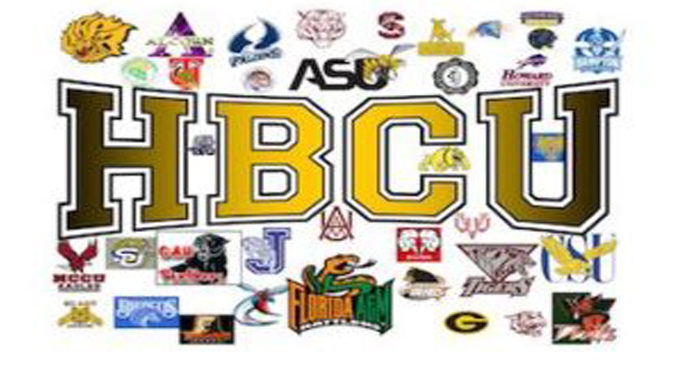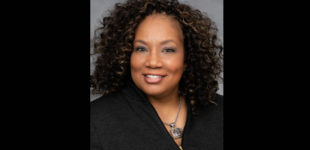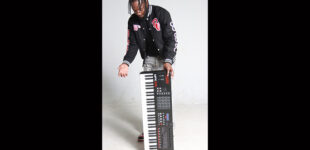HBCUs being brought to the forefront

There has been an increase in attention toward Historically Black Colleges and Universities (HBCUs) over the last few years. From high school players choosing HBCUs over Power 5 schools, to Hall of Fame players coming back to coach, and even professional leagues showcasing them on multiple platforms.
All this love being shown to HBCUs warms the heart of every person who had the opportunity to say they attended an HBCU because they have flown under the radar for so long. We even had people questioning if they are even needed any longer.
HBCUs were created to give minority students a place to earn degrees of higher learning due to the fact that they were not allowed to do so at most white institutions at the time. Most were established in the years following the Civil War and are mostly concentrated in the southeastern United States.
In the past 20 years or so, several HBCUs either closed or were in jeopardy of closing. Seeing the warning signs, schools such as Hampton University, Tennessee State University, and North Carolina A&T State University, have all left either the Mid-Eastern Athletic Conference or the Southwestern Athletic Conference in recent years.
Thankfully, over the last few years, several things have taken place that have put HBCUs back on the map. Most recently, HBCUs were heavily featured during the 2021 NBA All-Star Game. The game is generating over $3 million for HBCUs through donations to scholarship funds, but the larger impact of national exposure will prove to be much more valuable to HBCUs in the long run.
The ability to see those colleges and universities on a national stage is something that is not often done. It reminds young people of color of the value these institutions still hold. Mo Williams, first year head coach of Alabama State and former NBA All-Star, knows how much exposure the NBA All-Star game can provide.
“Everything’s about exposure,” said Williams in an article with NBA.com. “Being that the All-Star Game is putting an emphasis on HBCUs, it gives us exposure and it helps in a lot of different areas, a lot of different ways, a lot of different schools.
“It’s no different from Super Bowl commercials. People spend millions of dollars to put their commercial on the Super Bowl for the exposure. And, you know, the exposure we’re getting this weekend from the NBA All-Star Game, it only can help.”
Almost every element of the game was set to highlight HBCU culture. The court for the All-Star Game was designed in collaboration with artists from HBCUs. Gladys Knight, a Shaw University graduate, sang the “Star-Spangled Banner.” The well-known bands from Florida A&M University and Grambling State University performed during the introductions. Even the refereeing crew were all HBCU graduates.
“It was part of the reason why we’re here in Atlanta,” said Adam Silver, NBA commissioner. “This was an opportunity to focus on the HBCUs.”
NBA All-Star and NBA Players Association President, Chris Paul, has been one of the biggest supporters of HBCUs recently. Paul sported a jacket representing all 107 HBCUs during All-Star weekend. He is also finishing his degree at Winston-Salem State University.
Earlier this year, Paul spoke with CBS News about the importance of HBCUs. As he has matured, Paul has researched the history of many of these important institutions of higher learning.
“I just want to make sure everyone understands that HBCUs are not less than, they’re very capable and important to our history, to our culture, to everything,” said Paul in the interview.
Paul also collaborated with Stephen A. Smith of ESPN for the “Why Not Us” documentary. The film focuses on the obvious lack of resources and funds many HBCU sports programs deal with by following the North Carolina Central University men’s basketball team for the 2020-21 season.
Another recent high note for HBCUs was the hiring of Deion Sanders as head football coach at Jackson State University (JSU). Sanders is an NFL Hall of Famer that played college football at Florida State University. His presence at the school brings instant attention and notoriety to the school.
Sanders won his first game with the school and the potential benefits he can bring to the school can be exponential. He has already proven that he can flip players to Jackson State that more than likely were headed to PWI’s (predominately white institutions).
Since the arrival of Sanders, donations have spiked dramatically for the school. The constant attention, along with the fact they are playing football in the spring, has also brought attention from the media.
The buzz surrounding the program has helped push the game between JSU and Mississippi Valley State to be aired on ESPN 2. Now let’s think about the last time a regular season game between two HBCU programs has been shown on ESPN 2. I am not sure what the exact number is, but I’m sure you could probably count on one hand the amount of times that has happened on that station. For Sanders to have such a tremendous impact in only year one is a great start for what could positively impact HBCUs for years to come.
Athletes are also heading to HBCUs. It is not just the football and basketball players who are joining the movement, either. What has been interesting is the attention non-revenue sport athletes have been giving to HBCUs. The football and basketball players get all the publicity, but when non-revenue athletes are also choosing HBCUs, it’s really saying something.
For instance, North Carolina A&T State University has been able to build one of the best track and field programs in the nation. Head coach, Duane Ross, has snatched several athletes from Power 5 PWIs to build his program. I never thought I would see the day an HBCU would have enough talent to compete with PWI powerhouse track and field programs as a team and not just in individual events.
I am so happy to see this resurgence in attention given to HBCUs. Those of us who have attended one know and feel the pride and importance these institutions provide. Yes, they are still needed, and I hope more of our youth and attention continues to go toward them, especially since it’s the minority kids that are generating the vast majority of revenue for PWIs. I hope more minority athletes attend HBCUs so that revenue can swing back to where it’s needed most.











